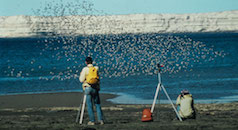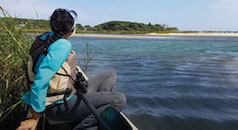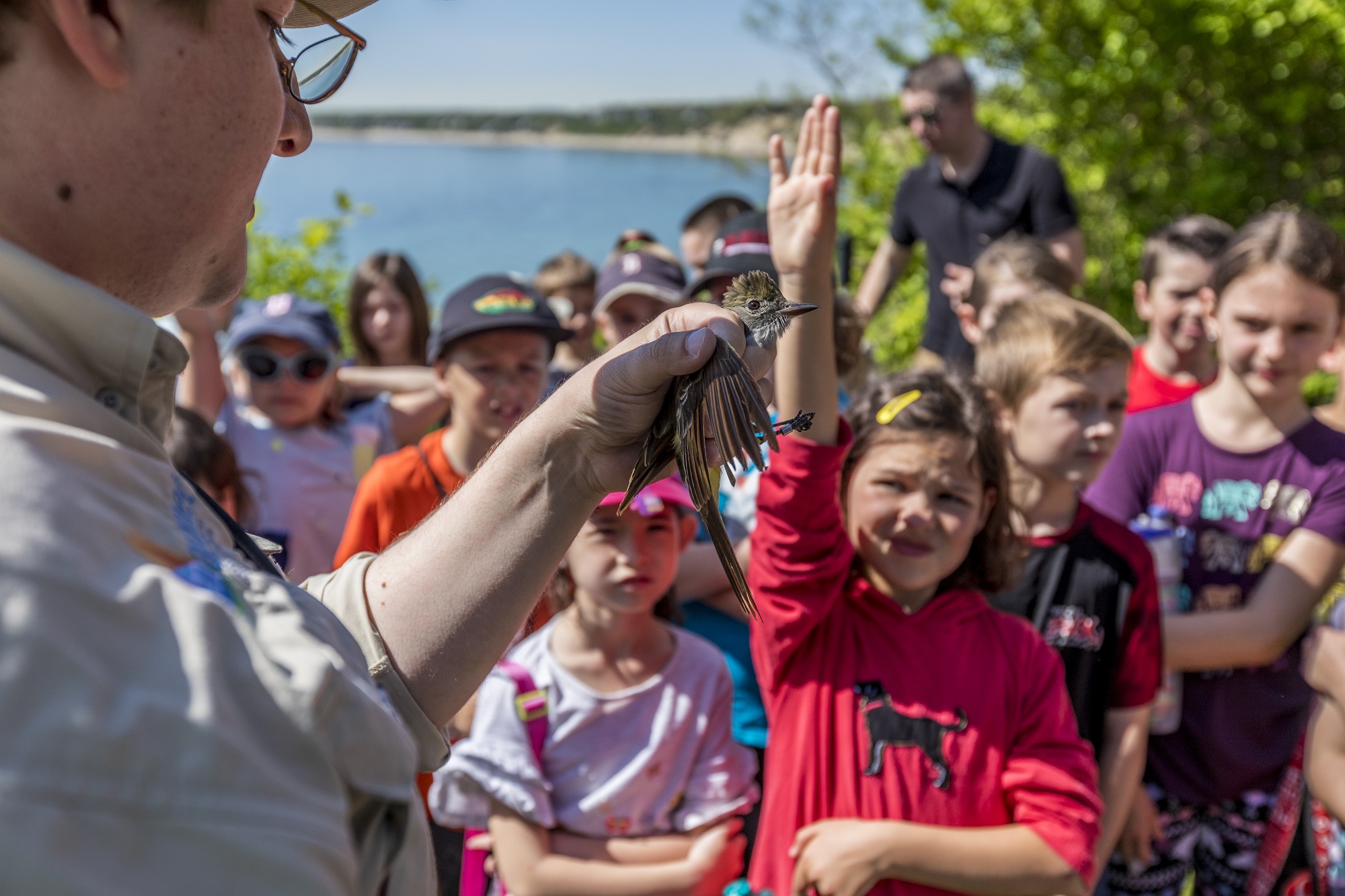 U.S. Fish and Wildlife Service’s listing of Red Knot as threatened under the U.S. Endangered Species Act has come at a crucial time for this rapidly declining subspecies.
U.S. Fish and Wildlife Service’s listing of Red Knot as threatened under the U.S. Endangered Species Act has come at a crucial time for this rapidly declining subspecies.
Manomet has a long history in Red Knot research and conservation. In the early 1970s, Manomet Senior Scientist Emeritus, Brian Harrington, began ground-breaking discoveries about knot migration that contributed to the vision and creation of the Western Hemisphere Shorebird Reserve Network (WHSRN). Manomet’s Shorebird Recovery Program, currently directed by Stephen Brown Ph.D. continues to lead significant partnership-oriented efforts in the study and conservation of Red Knots.
Red Knots of the Atlantic Flyway, (subspecies rufa), one of longest-distance migrants in the animal kingdom, have experienced over a 75% decline since the 1980s and as the listing implies, are in danger of extinction in the near future if immediate conservation action is not taken.
Traveling over 18,000 miles round-trip every year between the bird’s Canadian Arctic nesting areas and winter habitat at the southern tip of South America, the subspecies relies on a limited number of important sites to stop, rest, and feed during this epic migration. To date there are seven WHSRN sites designated on the basis of supporting a critical proportion of the subspecies’ population. For example, Delaware Bay was designated as a WHSRN Site of Hemispheric Importance in 1986 because it supported more than 30% of the world’s rufa Red Knot population.
There are growing threats to these birds at many of their stop-over sites, including chronic disturbance, depletion of food resources, water pollution, and direct habitat loss due to coastal engineering and development. Listing the subspecies as threatened triggers all of the protections of the U.S. Endangered Species Act and provides a means for federal, state, local, and private organizations and landowners to work together to alleviate these threats in the United States.
 “Manomet’s Shorebird Recovery Program will continue to work with state wildlife agencies, the US Fish and Wildlife Service, the Army Corp of Engineers, and private conservation organizations to implement management projects that strategically address population stress to these spectacular shorebirds,” said Manomet’s Brad Winn, Director of Shorebird Habitat Management. “Shorebirds, including knots, respond well to habitat quality improvements, habitat creation, and habitat protection measures when provided to them. With many dedicated partners, we absolutely have the ability to turn this decline around by directly addressing the threats that are limiting the recovery of this species.”
“Manomet’s Shorebird Recovery Program will continue to work with state wildlife agencies, the US Fish and Wildlife Service, the Army Corp of Engineers, and private conservation organizations to implement management projects that strategically address population stress to these spectacular shorebirds,” said Manomet’s Brad Winn, Director of Shorebird Habitat Management. “Shorebirds, including knots, respond well to habitat quality improvements, habitat creation, and habitat protection measures when provided to them. With many dedicated partners, we absolutely have the ability to turn this decline around by directly addressing the threats that are limiting the recovery of this species.”
The listing will also help enhance international cooperation and coordination of conservation efforts, and reinforce existing conservation measures to slow habitat loss and stimulate population recovery.
“The recovery of a species with a migration that spans the hemisphere requires an international approach to conservation,” explains Rob Clay, Director of WHSRN’s Executive Office. “Manomet has a lead role in the creation of one such approach—the Atlantic Flyway Shorebird Conservation Business Strategy. This collective strategy among a diversity of partners is guiding shorebird recovery from the Arctic to the Southern Cone of South America.”





 Back to all
Back to all